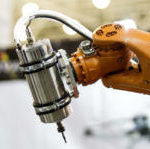Biomedical research and pharmaceutical development have always been intrinsically linked with technology – from research techniques and equipment to the way we monitor patients, diagnose illnesses and treat conditions.
The rapid advent of technologies that were unimaginable just a few short years ago has made this relationship stronger than ever.
In July 2017, the House of Lords Science and Technology Committee launched an enquiry into “Life Sciences and the Industrial Strategy”, investigating whether the Government is doing enough to incorporate the sector’s latest innovations in the NHS. Could one of these revolutions be Artificial Intelligence?
Artificial Intelligence
Artificial Intelligence (AI) is defined by the Oxford Dictionary as “computer systems able to perform tasks normally requiring human intelligence” such as decision making.
From Netflix predicting what film you might like to watch next to Amazon suggesting products based on previous searches, we already use this tech in a variety of ways.
Pioneering companies are currently developing algorithms which learn as they go, capable of analysing huge amounts of data for very specific patterns.
How is this being used?
AI can already be used to aid screenings for illnesses including cancer, analysing health data such as images, medical history and lifestyle information to detect symptoms early. It can also look for patterns which would suggest anomalies or rare finds. Of course, accuracy is key in diagnostic AI.
Abdul Hamid Halabi, global business development lead at visual computing firm NVIDIA, explains that when researchers at Mount Sinai fed 70,000 pieces of data into a neural network, the resulting model was able to “forecast with about 80 percent accuracy whether an individual will develop any of about 80 diseases within a year. In the case of predicting liver cancer, the system is up to 90 percent accurate”.
Errors in AI programs decrease over time as they learn from mistakes, whereas human error rates mostly stay the same.
As well as diagnostic screenings, it has been suggested pharmaceutical companies could use AI to analyse Big Data, such as electronic health records. Machine learning programs could compare success rates of treatments, develop better prognostic tests, detect biomarkers and price new products according to effectiveness – all faster and with more accuracy than by humans.
However, this would also require widespread patient consent to use their health data, alongside greater collaboration between clinicians, healthcare organisations and researchers.
Whatever stage of the research and development process you are involved in, ever-changing technology requires flexible Life Sciences insurance. Call Safeguard on 08456 888 284 or email sales@safeguardinsurance.co.uk to talk to our team.

